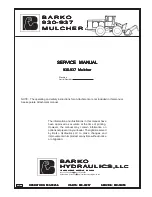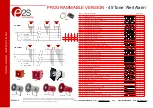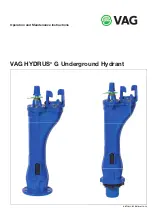
the job. Only use accessories and attachments approved
by the manufacturer.
•
Check that operators presence controls, safety switches,
and shields are attached and functioning properly. Do not
operate unless they are functioning properly.
Operation
•
Do not operate the engine in a confined space where
dangerous carbon monoxide fumes can collect.
•
Operate the machine only in daylight or in good artificial
light.
•
Remember there is no such thing as a safe slope. Travel
on grass slopes requires particular care. To guard against
overturning:
–
Do not stop or start suddenly when going up or
downhill.
–
The machine speed should be kept low on slopes and
during tight turns.
–
Stay alert for humps and hollows and other hidden
hazards.
–
Never operate the machine across the face of the
slope, unless the machine is designed for that purpose.
•
Stay alert for holes in the terrain and other hidden hazards.
•
Use care when using heavy equipment.
–
Do not turn sharply. Use care when reversing.
–
Do not go from reverse to forward or forward to
reverse without coming to a complete stop.
–
Use counterweight(s) or wheel weights when
suggested in the
Operator's Manual.
•
Watch out for traffic when crossing or near roadways.
•
When using any attachments, never direct discharge of
material toward bystanders nor allow anyone near the
machine while in operation.
•
Never operate the machine with damaged guards, shields,
or without safety protective devices in place. Be sure all
interlocks are attached, adjusted properly, and functioning
properly.
•
When loading with sand, distribute load evenly. Operate
the tow vehicle with extra caution when the hopper is full
of sand. Keep load balanced to prevent it from shifting.
•
Do not get water on the Wireless remote controller.
•
Do not change the engine governor settings or overspeed
the tow vehicle engine. Operating the engine at excessive
speed may increase the hazard of personal injury.
•
Before leaving the operators position:
–
Stop on level ground.
–
Disengage the power take-off and the attachments.
–
Change into neutral and set the parking brake.
–
Stop the engine and remove the key.
•
Disengage drive to attachments, stop the engine, and
remove the ignition key:
–
before clearing blockages;
–
before checking, cleaning, or working on the machine;
–
if the machine starts to vibrate abnormally (check
immediately).
•
Disengage drive to attachments when transporting or not
in use.
•
Stop the engine and disengage drive to attachment:
–
before refuelling;
–
before making an adjustment unless adjustment can
be made from the operator's position.
•
Reduce the throttle setting before stopping engine
and close the fuel shut-off valve at the conclusion of
operation.
•
Keep hands and feet out of the hopper when the machine
is operating or when the hydraulic power pack engine, on
the tow vehicle, is running.
•
Keep hands and feet away from the spinner assembly
when the machine is operating or when the hydraulic
power pack engine, on the tow vehicle, is running.
•
Keep hands from the hopper guard on the spinner guard
when the machine is operating or when the hydraulic
power pack engine, on the tow vehicle, is running.
•
Look behind and down before backing up to be sure of
a clear path.
•
Slow down and use caution when making turns and
crossing roads and sidewalks.
•
Do not operate the machine under the influence of
alcohol or drugs.
•
Lightning can cause severe injury or death. If lightning
is seen or thunder is heard in the area, do not operate
the machine; seek shelter.
•
The operator shall turn on flashing warning lights, if
provided, whenever traveling on a public road, except
where such use is prohibited by law.
Maintenance and Storage
•
Tighten any loose nuts, bolts and screws to assure
machine is in safe operating condition. Make sure Top
Dresser mounting pins, pivot pins and hydraulic cylinder
pins are in place and secure.
•
Never store the equipment with fuel in the tank inside a
building where fumes may reach an open flame or spark.
•
Allow the engine to cool before storing in any enclosure
and do not store near flame.
•
To reduce the fire hazard, keep the engine,
silencer/muffler, battery compartment, drives, and fuel
storage area free of grass, leaves, or excessive grease.
Clean up oil or fuel spillage.
•
Replace worn or damaged parts for safety.
•
If the fuel tank has to be drained, do this outdoors.
4





































